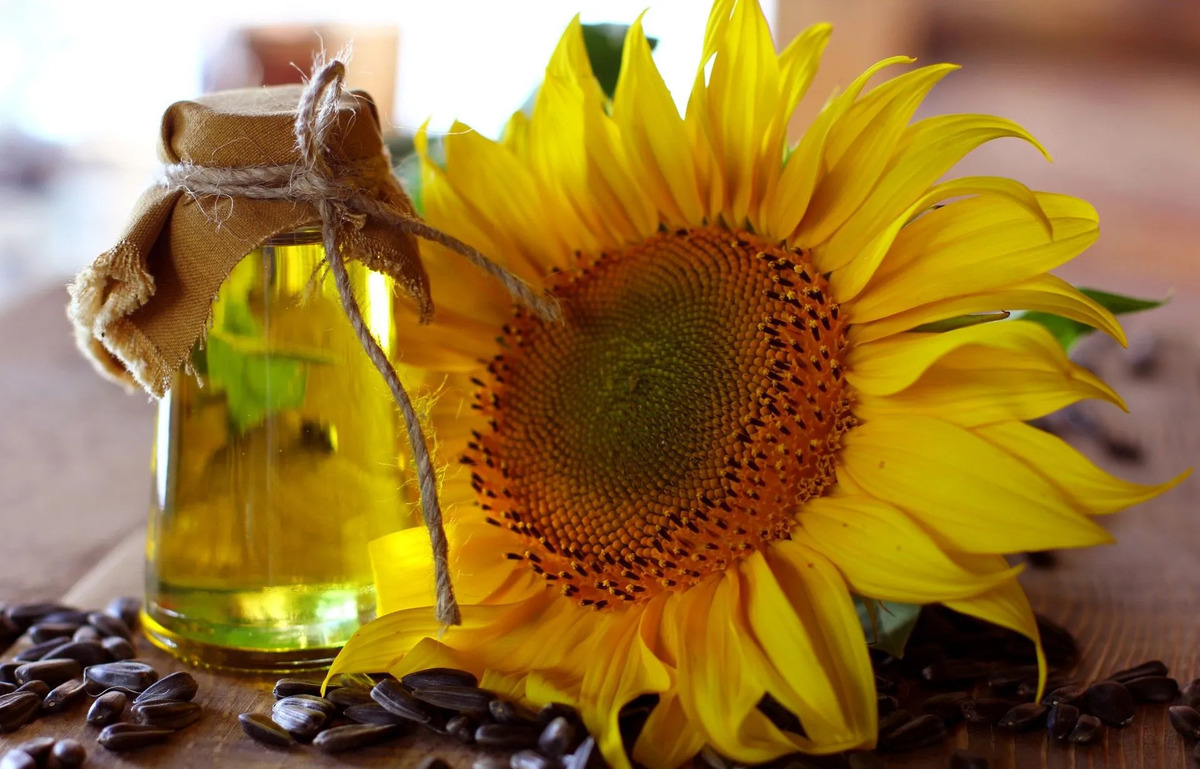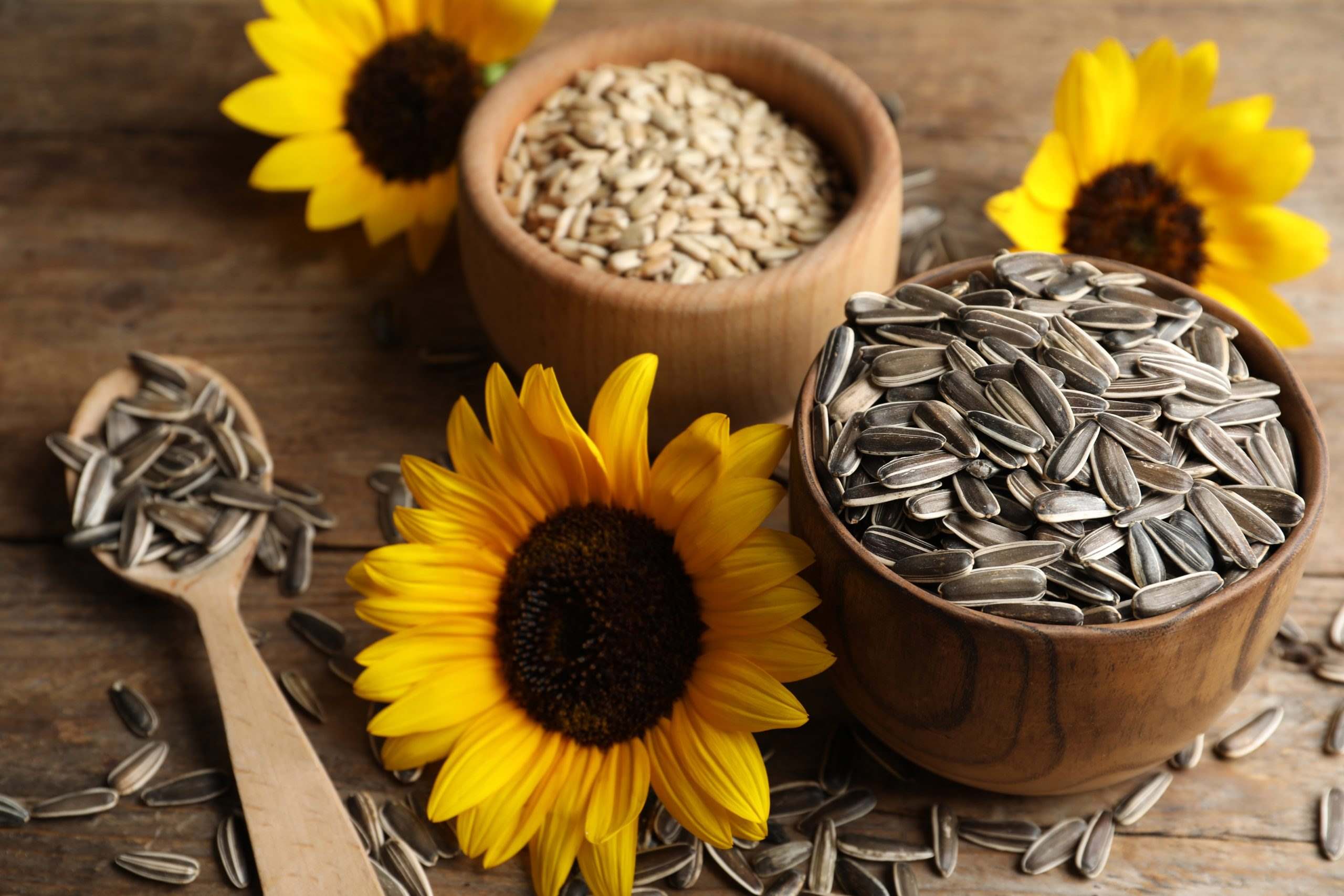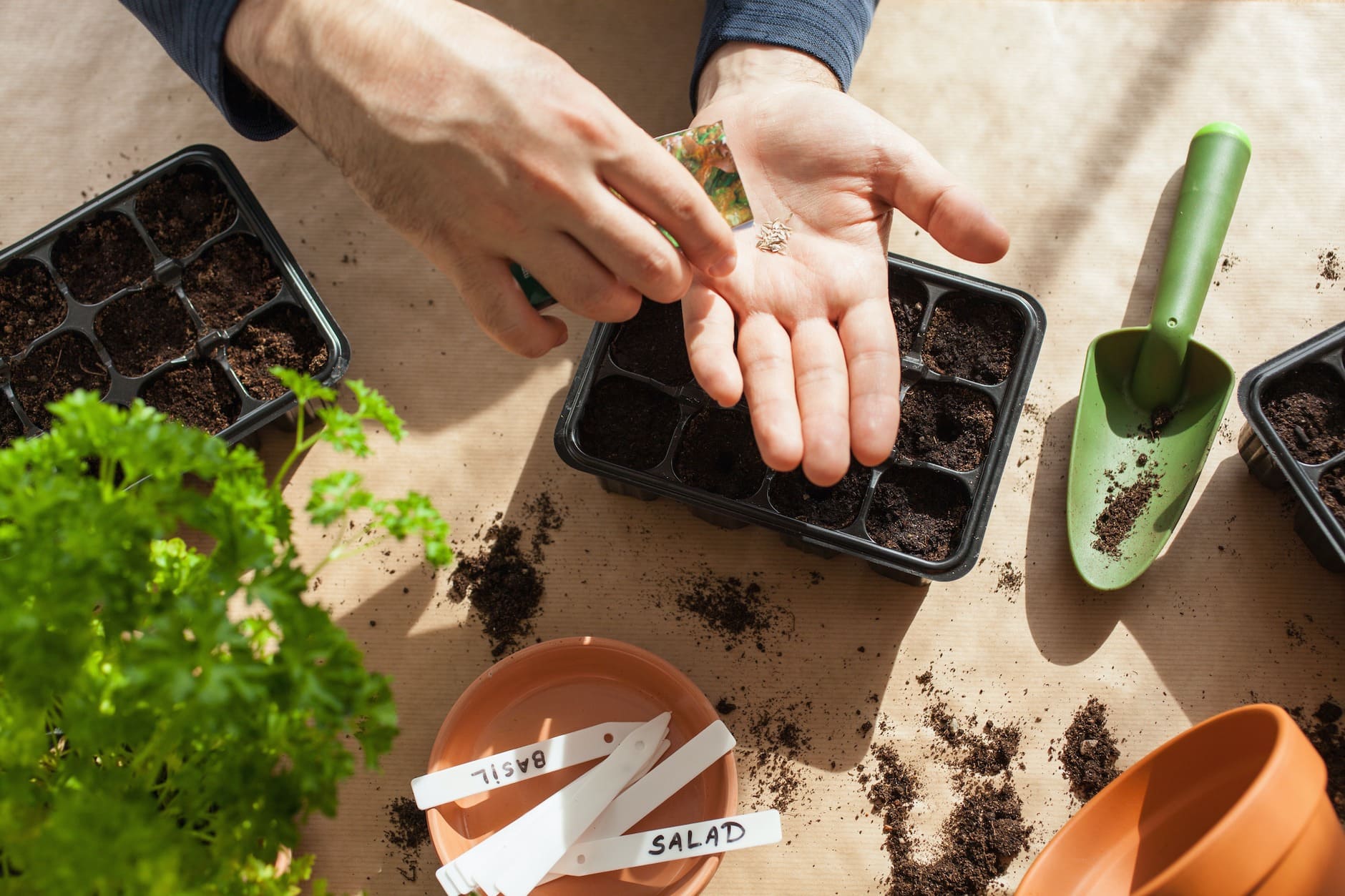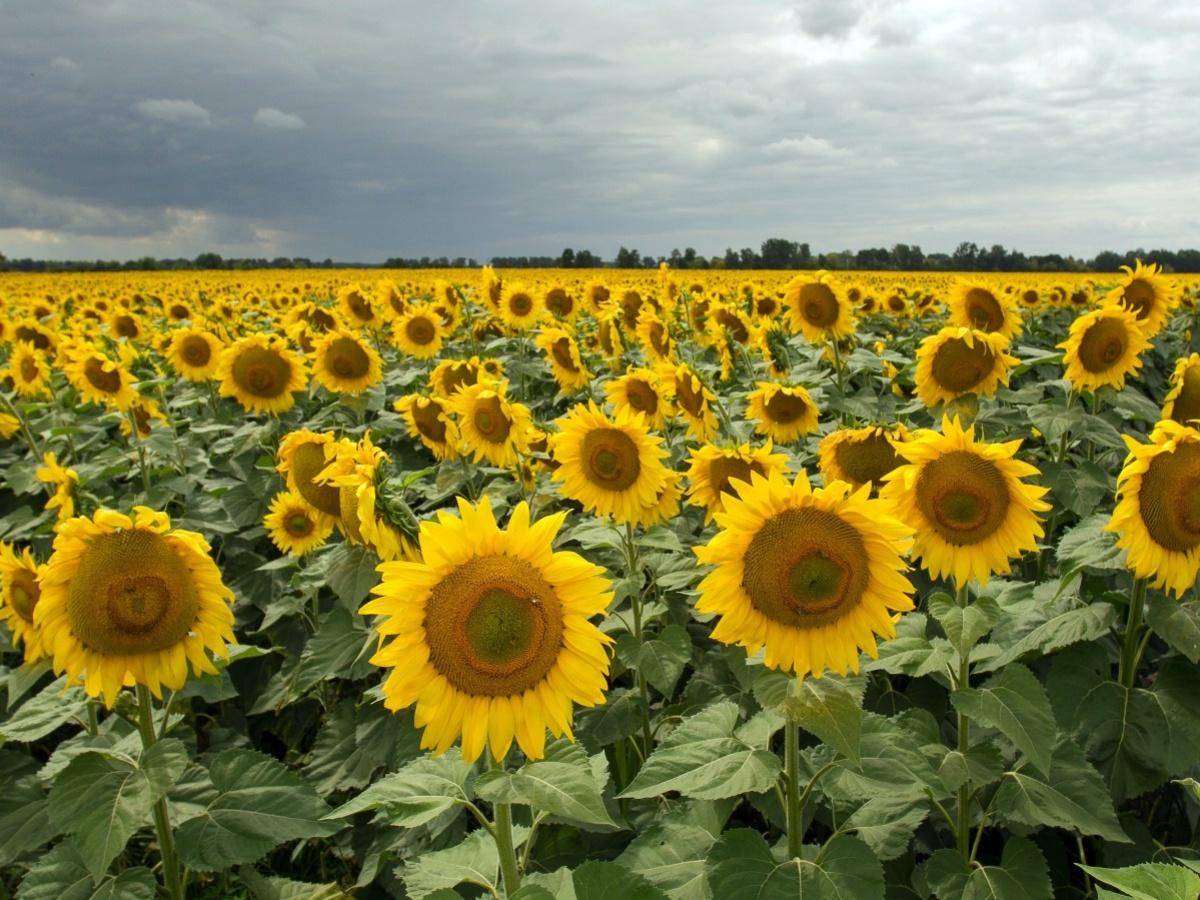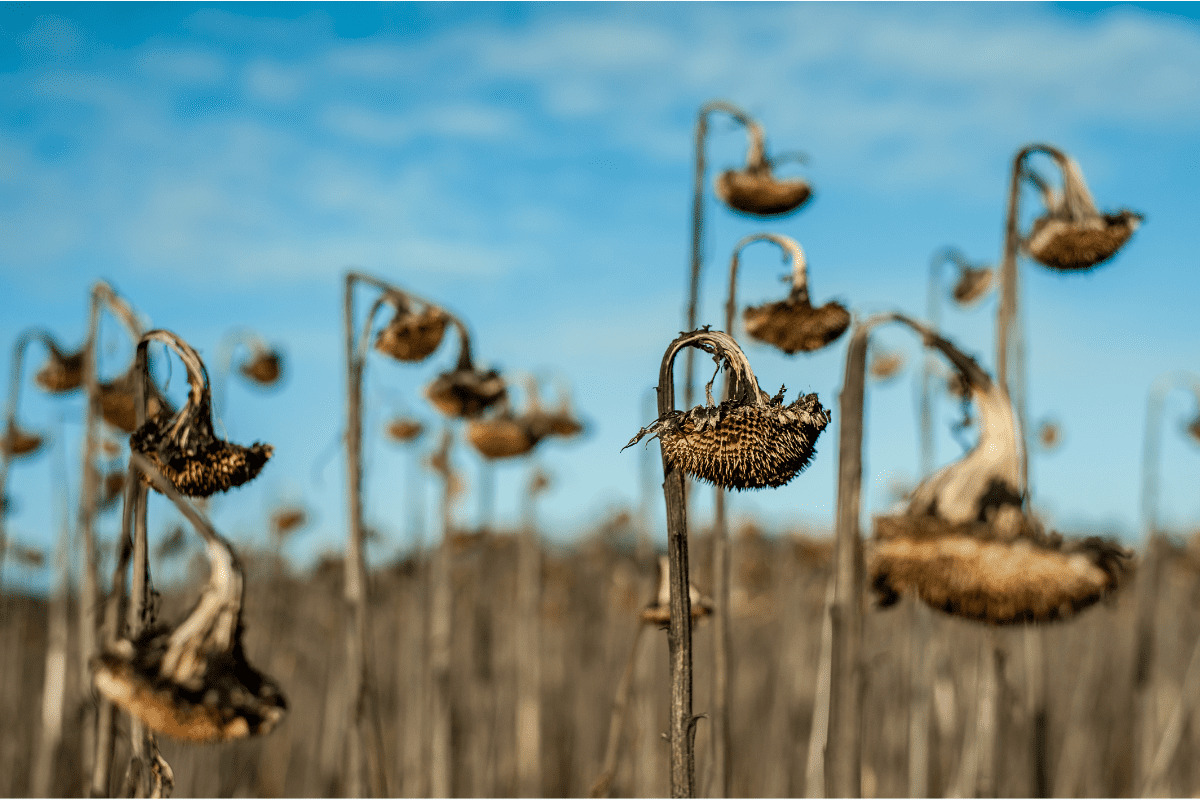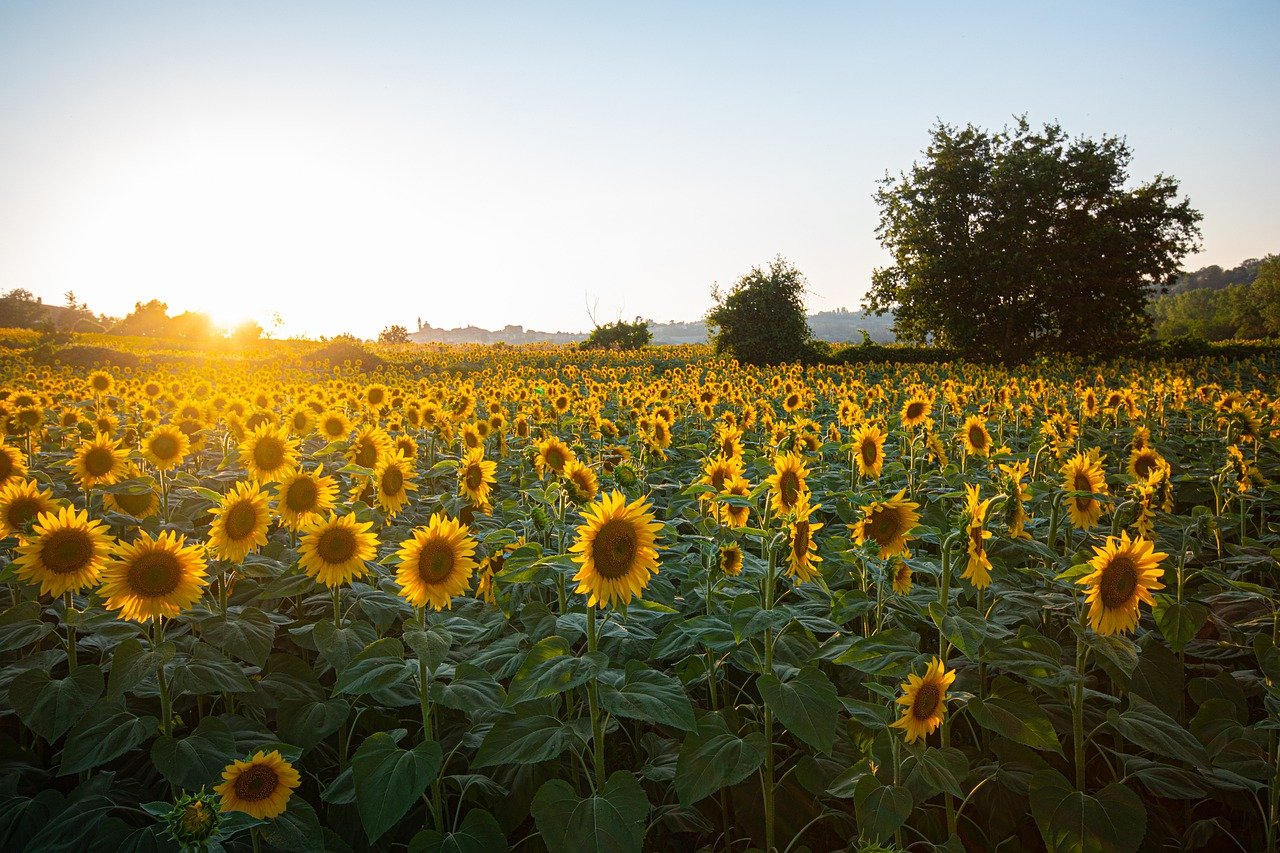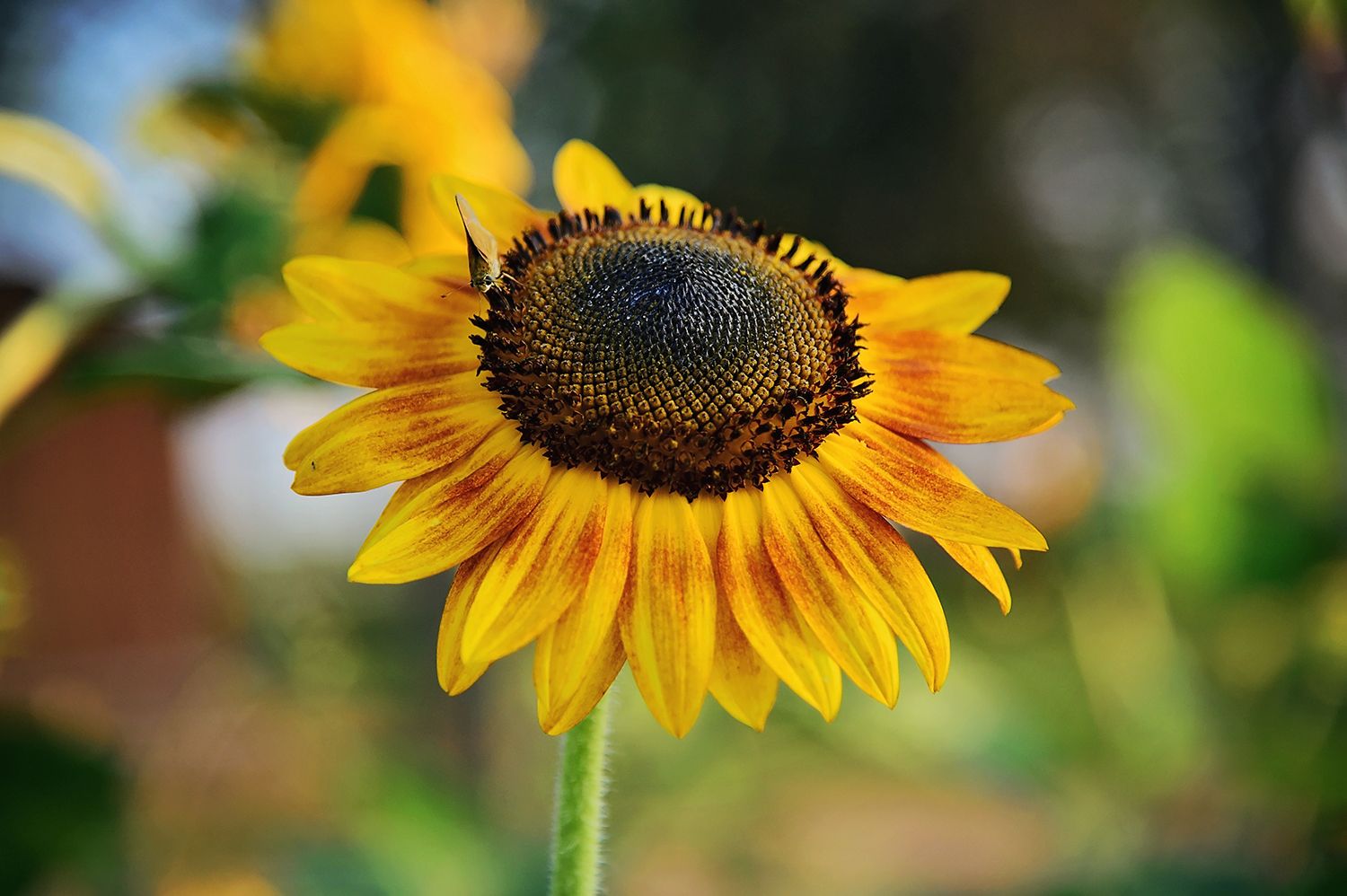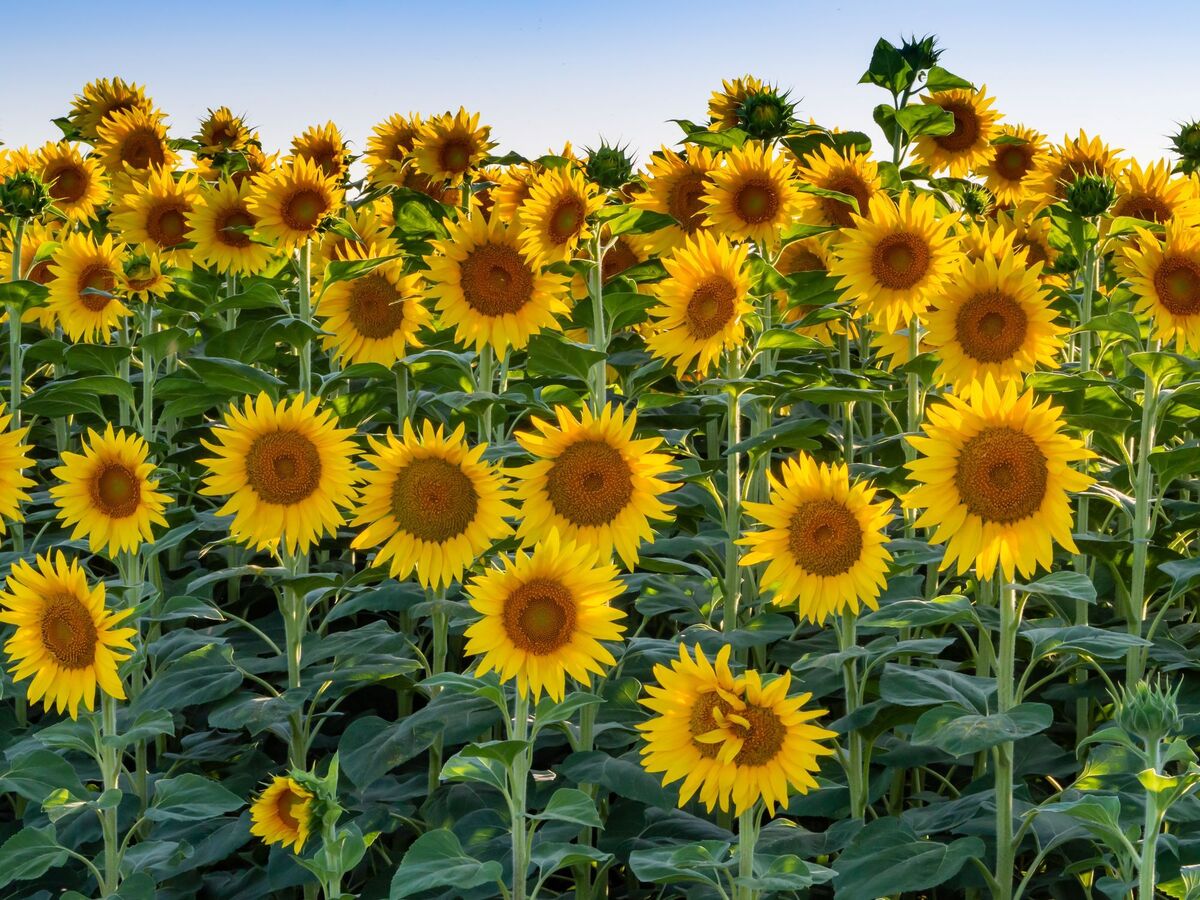Home>Gardening Techniques>Plant Care>How Do You Dry Out Sunflowers
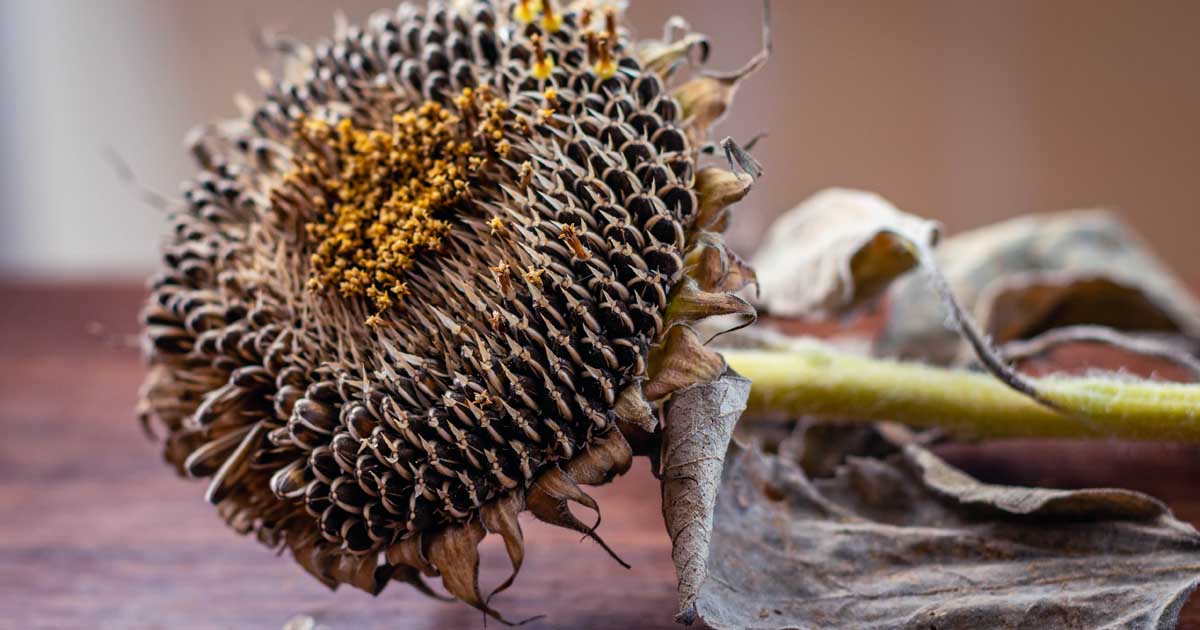

Plant Care
How Do You Dry Out Sunflowers
Modified: January 22, 2024
Learn the best ways to dry out sunflowers with expert plant care tips. Discover the techniques to preserve their beauty and extend their lifespan.
(Many of the links in this article redirect to a specific reviewed product. Your purchase of these products through affiliate links helps to generate commission for Chicagolandgardening.com, at no extra cost. Learn more)
Table of Contents
Introduction
Welcome to our guide on how to dry out sunflowers! Sunflowers are not only beautiful flowers that brighten up gardens and bouquets, but they also have various uses once they’re dried. Whether you want to preserve the beauty of your sunflowers or utilize them for crafts or culinary purposes, drying them properly is essential.
There are several methods you can use to dry out sunflowers, and in this article, we will explore each of them in detail. Each method has its own advantages and works best in different situations, so you can choose the one that suits your needs and resources.
Before diving into the various drying methods, it’s important to understand the factors that affect sunflower drying. The size, moisture content, and environmental conditions can influence the success of drying sunflowers. Sunflowers with larger heads may take longer to dry, while higher humidity levels can slow down the drying process. By considering these factors, you can determine which drying method will be most effective for your sunflowers.
Now, let’s explore the different methods of drying out sunflowers, so you can choose the one that fits your requirements!
Factors Affecting Sunflower Drying
When it comes to drying sunflowers, several factors can impact the overall drying process. Understanding these factors will help you choose the most suitable drying method and ensure successful results. Here are the key factors affecting sunflower drying:
- Size of the sunflower: The size of the sunflower head plays a crucial role in the drying time. Larger sunflowers tend to have more moisture, which means they will take longer to dry compared to smaller ones. Keep in mind that patience is vital when drying larger sunflowers.
- Moisture content: Sunflowers contain natural moisture, which needs to be effectively removed for successful drying. Sunflowers with higher moisture content might require additional drying time or different drying methods to achieve the desired dryness level.
- Environmental conditions: The surrounding environmental conditions can significantly affect sunflower drying. Humidity levels, temperature, and airflow all play a role in the drying process. Higher humidity levels can slow down drying, while excessive heat can cause the sunflowers to wilt or become discolored.
- Proper handling and preparation: Proper handling and preparation of sunflowers before drying are essential for optimal results. Remove any foliage or leaves from the sunflowers, as they can retain moisture and hinder the drying process. Additionally, consider trimming the stems to a manageable length for easier handling.
- Storage conditions: Once the sunflowers are fully dry, storing them in appropriate conditions is crucial to maintain their integrity. Store the dried sunflowers in a cool, dry place away from direct sunlight and humidity.
By considering these factors, you can better plan and choose the most effective drying method for your sunflowers. The next sections will explore various drying methods that you can utilize to dry out your sunflowers and preserve their beauty.
Method 1: Air-Drying Sunflowers
Air drying is one of the simplest and most common methods to dry out sunflowers. This method involves allowing the sunflowers to dry naturally over time, without the use of any additional equipment. Here’s how you can air-dry your sunflowers:
- Choose sunflowers that are fully matured but have not yet started wilting. The petals should be vibrant and firm to the touch.
- Cut the sunflowers from the stem, leaving a few inches of stem attached. This will make them easier to handle during the drying process.
- Gather several sunflowers together and tie their stems with a piece of twine or rubber band. Make sure to loosely secure the stems to allow for airflow.
- Hang the bundled sunflowers upside down in a well-ventilated area, away from direct sunlight and excessive humidity. A cool, dry room or a covered porch is ideal for air-drying.
- Let the sunflowers hang undisturbed for a few weeks. The drying time may vary depending on the size and moisture content of the sunflowers.
- Check periodically on the progress of the drying process. The sunflowers are ready when the petals become dry and brittle to the touch.
- Once the sunflowers are fully dried, gently remove them from the hanging position. Remove any excess debris or petals that may have fallen off during the drying process.
- Store the air-dried sunflowers in a cool, dry place, away from direct sunlight. You can display them as is or use them for various crafts or decor purposes.
Air drying is a great option for preserving the natural beauty of sunflowers. It allows them to retain their vibrant colors and adds a rustic charm to any arrangement or display. Remember to practice patience during the drying process, as it can take several weeks for the sunflowers to fully dry. In the next section, we explore another method of drying sunflowers using a dehydrator.
Method 2: Using a Dehydrator
A dehydrator is a convenient and efficient tool for drying out sunflowers. This method speeds up the drying process by providing controlled heat and airflow. Here’s how you can use a dehydrator to dry your sunflowers:
- Select sunflowers that are fully matured and free from any signs of wilting. Look for vibrant petals and firm stems.
- Remove the leaves and excess foliage from the sunflowers, as they can retain moisture and hinder the drying process.
- Cut the sunflowers from the stem, leaving a few inches of stem attached for easier handling.
- Place the sunflower heads on the dehydrator trays in a single layer, ensuring they are not touching each other.
- Set the dehydrator to a low temperature, around 95°F (35°C). This will help preserve the color and integrity of the sunflowers.
- Allow the sunflowers to dry in the dehydrator for several hours, checking on them periodically. The drying time will depend on the size and moisture content of the sunflowers.
- Rotate the trays in the dehydrator every hour or so to ensure even drying.
- Check the sunflowers by gently pressing the petals. They should feel dry and crisp to the touch when ready.
- Once fully dried, remove the sunflowers from the dehydrator and let them cool completely before handling.
- Store the dried sunflowers in a cool, dry place, away from direct sunlight.
A dehydrator offers a quicker drying time compared to air drying, making it a great option if you have a large batch of sunflowers to dry or if you need them dried within a shorter timeframe. The controlled heat and airflow of the dehydrator ensure consistent and optimal drying results. In the next section, we will explore another method that uses a common household appliance: the oven.
Method 3: Oven Drying Sunflowers
If you don’t have a dehydrator, you can still dry out sunflowers using a common household appliance – the oven. Oven drying provides a controlled heat source that speeds up the drying process, allowing you to enjoy dried sunflowers in a relatively short amount of time. Here’s how you can oven dry your sunflowers:
- Preheat your oven to a low temperature, around 175°F (80°C).
- Select sunflowers that are fully matured and free from wilting. Look for vibrant petals and firm stems.
- Gently remove any excess foliage or leaves from the sunflowers.
- Cut the sunflowers from the stem, leaving a few inches intact for easier handling.
- Place the sunflower heads on a baking sheet or wire rack, ensuring they are not touching each other.
- Put the baking sheet or wire rack with the sunflowers into the preheated oven.
- Allow the sunflowers to dry in the oven for about 2 to 4 hours, depending on their size and moisture content. Keep a close eye on them to prevent over-drying.
- Every 30 minutes, rotate the baking sheet or wire rack to ensure even drying.
- Check the sunflowers by gently pressing the petals. They should feel dry and crisp to the touch when they are fully dried.
- Once the sunflowers are dried, turn off the oven and let them cool completely before handling.
- Store the oven-dried sunflowers in a cool, dry place, away from direct sunlight.
Oven drying is a suitable option if you don’t have a dehydrator but still want a quicker drying process compared to air drying. It allows you to enjoy beautifully dried sunflowers in just a few hours. However, be mindful of the temperature and keep a close eye on the sunflowers to avoid over-drying or scorching. In the next section, we will explore another traditional method of drying sunflowers: hanging them upside down.
Method 4: Hanging Sunflowers Upside Down
Hanging sunflowers upside down is a traditional method of drying that is simple yet effective. This method allows the sunflowers to naturally dry out while preserving their shape and color. Here’s how you can hang sunflowers upside down:
- Select fully mature sunflowers with vibrant petals and firm stems.
- Remove any excess foliage or leaves from the sunflowers.
- Cut the sunflowers from the stem, leaving a few inches of stem attached for easy handling.
- Gather a small bunch of sunflowers together, ideally about 3 to 4 sunflowers per bunch.
- Tie the stems of the sunflowers together with a piece of string or twine, creating a secure bundle.
- Find a well-ventilated area for hanging the sunflowers, such as a dry room or covered porch.
- Attach the bundle of sunflowers to a hook or nail, ensuring they are hanging upside down.
- Leave the sunflowers undisturbed to dry for several weeks. The drying time will depend on the size and moisture content of the sunflowers.
- Check on the progress of the drying process regularly, ensuring that the petals become dry and crisp to the touch.
- Once the sunflowers are fully dried, carefully remove them from the hanging position, taking care not to damage the petals or heads.
- Store the dried sunflowers in a cool, dry place away from direct sunlight.
Hanging sunflowers upside down is a traditional method that allows for natural air circulation, making it an effective way to dry out sunflowers. It also maintains the shape and integrity of the sunflowers, making them suitable for decorative purposes or crafts. While it may take longer compared to other drying methods, the results are worth the wait. In the next section, we will explore a quick method of drying sunflowers using a microwave.
Method 5: Microwaving Sunflowers
If you’re looking for a quick and efficient way to dry sunflowers, you can use your microwave. While not as common as other methods, microwaving provides instant results and is ideal for drying smaller sunflowers or individual petals. Here’s how you can microwave sunflowers:
- Select smaller sunflowers or individual petals that are fully matured.
- Remove any excess foliage or leaves from the sunflowers.
- Place the sunflowers or petals on a microwave-safe plate or paper towel, ensuring they are not overlapping.
- Set the microwave to a low power setting, around 20-30% power.
- Start with short intervals, such as 20-30 seconds, to prevent overheating or scorching the sunflowers.
- Microwave the sunflowers or petals in the short intervals, checking their progress during each interval.
- Continue microwaving and checking until the sunflowers or petals are fully dried and have a crisp texture.
- Remove the dried sunflowers or petals from the microwave and let them cool before handling.
- Store the microwaved sunflowers in a cool, dry place away from direct sunlight.
Microwaving sunflowers is a quick and convenient method, particularly when you need to dry them in a short amount of time. However, it’s important to monitor the process closely to avoid overheating or scorching the sunflowers. This method is best suited for smaller sunflowers or individual petals rather than large sunflower heads. With proper care and attention, microwaved sunflowers can still be used for crafts, floral arrangements, or other decorative purposes.
In this article, we have explored five different methods for drying out sunflowers: air-drying, using a dehydrator, oven drying, hanging them upside down, and microwaving. Each method offers its own unique advantages and can be chosen based on your preferences, resources, and time constraints. By following these methods, you can effectively dry out sunflowers and preserve their beauty for various purposes. Whichever method you choose, remember to handle the sunflowers with care and store them properly to enjoy their beauty for a long time.
Conclusion
Drying sunflowers is a wonderful way to preserve their beauty and extend their usability beyond their fresh state. Whether you choose to air-dry, use a dehydrator, oven dry, hang them upside down, or even microwave them, each method offers its own benefits and allows you to enjoy dried sunflowers in unique ways.
Air-drying is a simple and traditional method that takes advantage of natural airflow to dry the sunflowers. It is ideal for preserving the vibrant colors and rustic charm of the flowers. Using a dehydrator provides a faster drying time and allows for more control over temperature and airflow, making it a great option for larger batches or when you need quick results.
Oven drying offers the convenience of using a common household appliance to speed up the drying process. Hanging sunflowers upside down is a traditional method that creates a visually pleasing display while allowing for natural air circulation. If time is of the essence, microwaving sunflowers can provide instant results for smaller blooms or individual petals.
Whichever drying method you choose, it’s important to consider the factors that affect sunflower drying, such as size, moisture content, environmental conditions, handling, and storage. By taking these factors into account and following the appropriate drying technique, you can ensure successful results and enjoy beautifully dried sunflowers.
Remember, dried sunflowers can be used for a variety of purposes, including crafts, floral arrangements, wreaths, and even culinary creations. Their vibrant colors and unique texture add a touch of natural beauty to any project or display.
So, whether you want to preserve a bouquet of sunflowers from your garden or have sunflowers for your creative endeavors, these drying methods will help you achieve your desired results. Enjoy the beauty and versatility of dried sunflowers for months to come!
